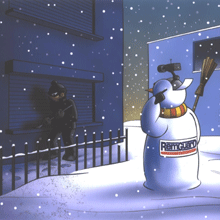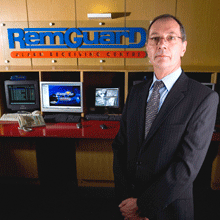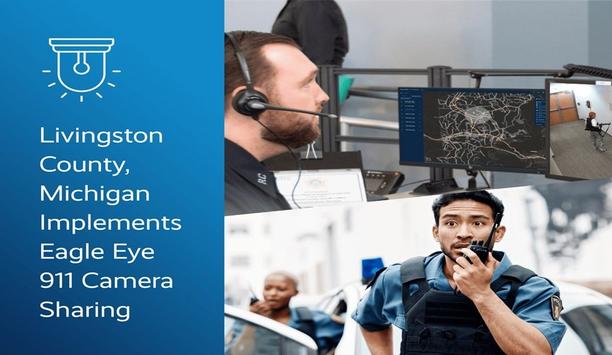 |
| RemGuard's 'healthcheck' advice is for users of remotely monitored, detector activated CCTV |
Alan Collinge, Operations Director at RemGuard said: "A few simple checks now can avoid headaches later. Undoubtedly, winter is a challenge for any sort of equipment. Just as you would have your car or boiler inspected in anticipation of more challenging conditions, so it makes sense to do the same for remotely monitored, detector activated CCTV. The good news is that by paying attention to a few critical areas, from lighting to foliage, the monitoring of sites should run smoothly even in the depths of winter, without incidents being missed or unnecessary activations being caused."
The top five areas to focus attention on this winter include:
Windy weather
Naturally sites should be kept as tidy as possible and trees/bushes under control. Polythene sheeting blowing around in the wind can set-off beams triggering constant activations, as can overgrown foliage. The last thing anyone wants is a piece of unsecured tarpaulin flying around a yard, setting off one detector after another as it swirls around in the wind. Thankfully this is very much the exception rather than the rule.
An illuminating experience
With the hours of darkness increasing day by day, lighting becomes ever more critical. Sites should be illuminated properly. Having vital areas of a site in darkness is far from ideal and, by the same token, too much light in the wrong place, for instance shining directly into cameras blinding them, is not advisable. If the camera can see the source of the light it can cause the iris in the lens to shut down, resulting in a darker image. For remotely monitored, detector-activated CCTV, it is better if the detectors associated with this event-driven solution are used to drive the illumination at night. If an intruder is detected this approach means that adjacent lights can be turned on remotely to illuminate a camera's field of view - a key consideration in BS8418 the Code of Practice for remotely monitored, detector activated CCTV, - something which may not happen if the lights and monitoring are triggered separately. The cost of illuminating an extensive site overnight in winter can be prohibitive, so it definitely makes sense to have the ability, through the monitoring solution, to turn lights on and off remotely.
Sunshine
 |
| Alan Collinge, Operations Director at RemGuard |
Even though you might not think it, the sun can become a major issue in winter, being lower in the sky. In the case where detectors are not positioned correctly - ideally in an east-west plane - or if the wrong type of detector is selected, the outcome can be a high percentage of activations where there appears to be no visible cause. The solution is to ask your installer to adjust problematic detectors. In the meantime - unlike some providers who would take these out of the system completely - at RemGuard they take a more considered approach and only disable relevant detectors during the time they are affected by the sun, and then ensure they are re-enabled once the sun has moved from the detector's field of view.
Timer set-up
This one may seem obvious but it is surprising just how many users who have their lighting and remote monitoring controlled separately, forget to put the timer on their lighting back after British summer time ends. Left out of sync, the monitoring will come on but there will be an unwanted gap before the lighting follows.
Cameras
When it comes to cameras more modern units will have heaters to cope with the winter weather, but it is worth checking that the ones focusing on your site have this facility. Without a heater there is naturally the potential for cameras to freeze-up as temperatures plummet. It is also worth being aware that the use of cameras with built-in Infra Red (IR) lighting - such as LEDs mounted integrally around the perimeter of the lens - are far from ideal for remotely monitored, detector-activated CCTV as there is the very real potential for the IR illumination to reflect back into the lens from nearby reflective surfaces. This is especially evident when spiders' webs have been spun across the camera lens.
For more advice and assistance on preparing your site for winter or remote monitoring in general please contact Kevin Crosby on 0800 REMGUARD (736482), email, or visit the RemGuard website.


















